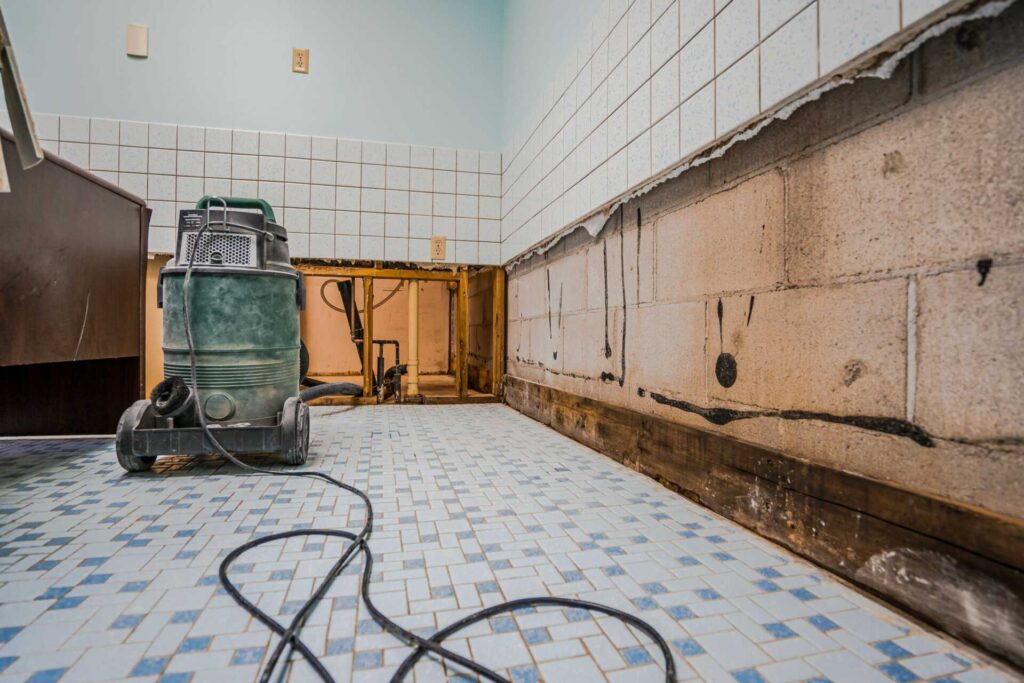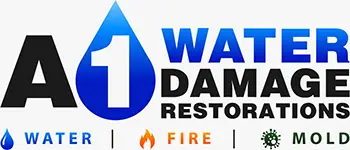
Contents
When faced with water damage in your home or business, knowing effective restoration techniques is essential for minimizing the impact on your property. Each step plays an important role in the successful restoration process from initial assessment to final sanitization. By understanding these techniques, you can ensure a thorough and efficient recovery, safeguarding your property and the well-being of those within.
Key Takeaways
- Swift assessment and extraction prevent further damage.
- Thorough drying with proper equipment minimizes mold risks.
- Mold remediation includes containment and moisture control.
- Structural repairs focus on stability and long-term prevention.
- Sanitization and restoration ensure safe, habitable environments.
Assessment and Inspection
During the initial assessment and inspection phase of water damage restoration, it’s vital to thoroughly examine the affected areas to determine the extent of the damage. The preliminary evaluation plays a significant role in understanding the scope of the water damage and devising an effective restoration plan.
As a restoration expert, your first task is to classify the damage based on its severity. This classification helps in prioritizing areas that require immediate attention and allows you to allocate resources efficiently.
When conducting the assessment, focus on identifying visible signs of water damage, such as stains, discoloration, and structural weaknesses. Use tools like moisture meters to detect hidden moisture that may lead to mold growth if left untreated.
Pay close attention to areas prone to water accumulation, such as basements, attics, and crawl spaces.
Document all findings meticulously to track the progression of the restoration process and verify that no areas are overlooked. Communicate effectively with the property owner, providing clear explanations of the damage classification and the necessary steps for restoration.
Water Extraction and Drying
When it comes to water extraction and drying in the restoration process, efficiency is key.
Effective water extraction methods ensure that excess water is swiftly removed to prevent further damage and mold growth.
Thorough drying techniques are then employed to completely eliminate moisture, ensuring a successful restoration outcome.
Efficient Water Extraction
To ensure efficient water extraction and drying, it’s essential to begin by swiftly evaluating the extent of water damage in the affected area.
When responding to water damage, quick action is essential. Implementing preventive measures and having an emergency response plan in place can notably minimize the impact of water damage.
Once on-site, the water extraction process should commence promptly. To remove excess water effectively, specialized equipment such as pumps, vacuums, and dehumidifiers must be utilized.
Professionals will strategically place this equipment to expedite the extraction process and prevent further damage to the property.
Thoroughly extracting water from all affected areas is imperative to prevent mold growth and structural issues.
The extraction process sets the foundation for successful drying techniques, ensuring a more efficient restoration process.
Thorough Drying Techniques
For achieving ideal results in water damage restoration, thorough drying techniques play an essential role in the process.
After water extraction, the focus shifts to effectively drying the affected areas to prevent further damage and mold growth. Utilizing evaporation methods is key to removing moisture from surfaces and the air. High-powered air movers and dehumidifiers aid in speeding up the evaporation process, ensuring thorough drying. Proper moisture control is critical during this phase to prevent secondary issues.
To achieve successful drying, it’s imperative to monitor moisture levels regularly. Moisture meters and sensors help in determining when the area has reached a peak dryness level.
Targeting hard-to-reach areas and hidden spaces is equally important to prevent lingering moisture pockets that can lead to mold growth.
Mold Remediation
Mold remediation often arises during water damage restoration as a vital step in preventing further damage and ensuring a safe environment for occupants.
Mold can start growing within 24-48 hours after water exposure, making prompt action essential. Here are some effective mold remediation techniques to contemplate:
Evaluation and Containment: Begin by evaluating the extent of mold growth to determine the best course of action. Contain the affected area to prevent spores from spreading to other parts of the property.
Moisture Control: Address any underlying moisture issues to prevent mold from returning. Proper ventilation and dehumidification can help maintain ideal humidity levels.
Cleaning and Disinfection: Thoroughly clean and disinfect contaminated surfaces using appropriate cleaning agents. This step is vital in removing mold spores and preventing regrowth.
Monitoring and Prevention: Regularly monitor the treated areas to ensure that mold doesn’t reappear. Implement preventive measures such as routine inspections and maintenance to avoid future mold growth.
Structural Repairs
As you address the aftermath of water damage and mold remediation, the focus naturally shifts toward tackling structural repairs within the affected property. Structural repairs are imperative to restore the integrity and safety of the building following water damage.
One key aspect of structural repairs is foundation stabilization. Water damage can weaken the foundation of a structure, leading to potential structural issues. To address this, specialized techniques are employed to stabilize and reinforce the foundation, ensuring the building’s stability.
Structural reinforcement is another essential component of the restoration process. This involves strengthening the framework and load-bearing elements of the property to prevent further damage and ensure its durability in the long term.
Professionals assess the extent of the structural damage and implement targeted reinforcement strategies to fortify the building against future water-related issues.
When it comes to structural repairs, it’s critical to entrust the job to experienced professionals who have the expertise and knowledge to carry out the necessary repairs effectively.
Dehumidification and Ventilation
Implementing effective dehumidification and ventilation strategies is paramount in the water damage restoration process.
To ensure a successful restoration, focus on moisture control and optimizing air circulation within the affected area. Here are key techniques to achieve this:
Dehumidification Equipment: Utilize industrial-grade dehumidifiers to extract excess moisture from the air and surfaces, aiding in the drying process.
Air Movers: Position high-powered air movers strategically to enhance air circulation, facilitating faster evaporation of water from walls, floors, and furniture.
Ventilation: When conditions allow, open windows and doors to promote natural airflow, which aids in removing damp air and introducing drier air into the space.
Monitoring: Regularly assess humidity levels using moisture meters to track progress and adjust the dehumidification and ventilation setup accordingly.
Sanitization and Restoration
Sanitization plays a vital role in ensuring the safety of the environment during water damage restoration.
Understanding the restoration process is essential to comprehending the steps involved in salvaging your property.
Addressing potential health risks during the restoration process is paramount to safeguarding the well-being of occupants and restoring the affected area effectively.
Sanitization Importance Explained
Understanding the importance of sanitization in water damage restoration is essential for ensuring a thorough and effective restoration process. When dealing with water damage, microbial growth can occur rapidly, making proper sanitization imperative.
Here are some key points to reflect on:
Chemical Sanitizers: Utilizing appropriate chemical sanitizers is critical in eliminating harmful bacteria and preventing future microbial growth.
Health Hazards: Failure to sanitize affected areas can lead to health hazards for inhabitants, such as respiratory issues and allergic reactions.
Preventing Spread: Sanitization not only cleans the visible damage but also prevents the spread of contaminants to other areas of your home.
Effective Restoration: Proper sanitization sets the foundation for an effective restoration process, ensuring that your property is thoroughly clean and safe for habitation.
Restoration Process Overview
Employing a meticulous approach to water damage restoration is vital to achieving successful outcomes. When faced with water damage, a prompt emergency response is imperative.
The restoration process typically involves several key steps to ensure thorough restoration. To begin with, assessment and inspection are conducted to evaluate the extent of the damage and develop a tailored restoration plan.
Next, water extraction is performed using specialized equipment to remove standing water from the affected area. Following this, the drying and dehumidification process is initiated to eliminate moisture and prevent mold growth.
Sanitization and cleaning are then carried out to restore the property to its pre-damaged condition. Throughout the restoration process, documentation is essential for insurance claims purposes.
Health Risks Addressed
Addressing health risks during sanitization and restoration is paramount to ensuring a safe and healthy environment after water damage.
When it comes to health risks addressed in water damage restoration, taking preventive measures and understanding the health impacts are vital. Here are some key points to reflect on:
Preventive Measures: Implementing proper sanitation techniques can prevent the growth of harmful bacteria and mold, reducing the risk of respiratory issues and other health complications.
Health Impacts: Water damage can lead to the development of mold, which can exacerbate allergies and respiratory conditions if not addressed promptly.
Professional Expertise: Engaging experienced professionals ensures that the restoration process is carried out effectively, minimizing health risks associated with contaminated water and mold.
Comprehensive Cleaning: Thorough cleaning and disinfection of affected areas are essential to eliminate pathogens and allergens, promoting a healthy indoor environment for you and your family.
Wrap-Up
Effective water damage restoration techniques involve thorough assessment, rapid extraction, meticulous drying, and extensive mold remediation. Structural repairs and proper dehumidification are essential for preventing further damage. Sanitization and ventilation ensure a safe and healthy environment post-restoration. But have you considered the importance of continuous documentation for insurance claims and future reference? Remember, detailed records can make all the difference in the restoration process.
Recent Posts
7 Best Storm Damage Repair and Mold Control Tips
You may not realize that storm damage can lead to hidden mold growth, posing health
How to Prevent Mold After Flood Damage
When faced with flood damage, preventing mold is paramount. Acting swiftly to eliminate excess water
Top 10 Tips for Flood Repair and Mold Prevention
When faced with the aftermath of a flood, steering through the waters of repair and
